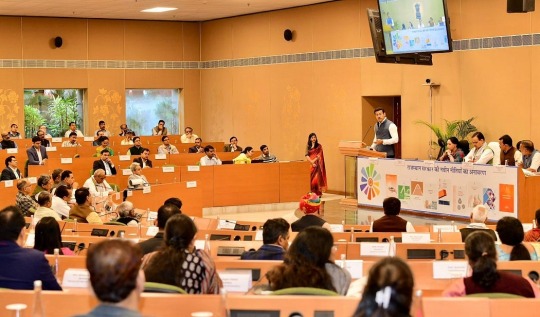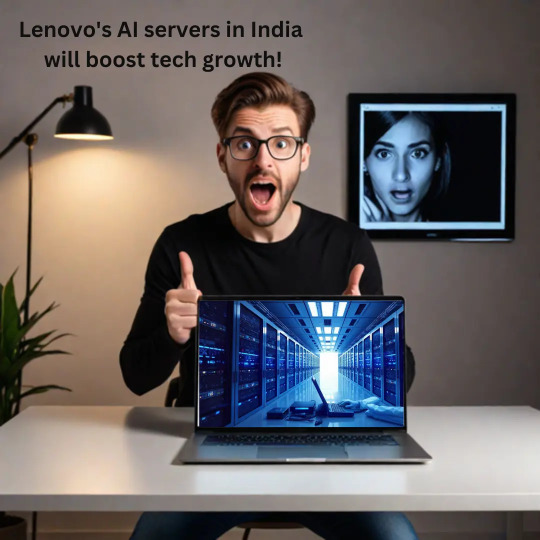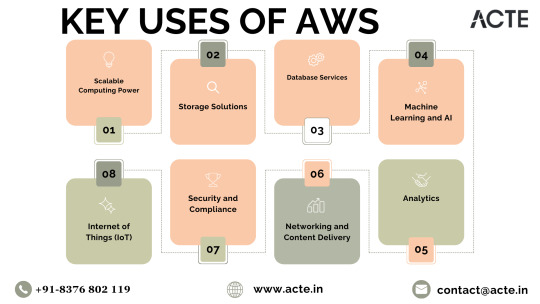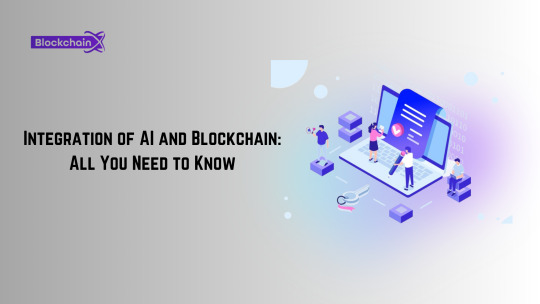#ai-driven hardware development
Explore tagged Tumblr posts
Text
#manufacturing support#ai-driven hardware development#mobile app development#custom ai model development
0 notes
Note
doll, all that plating makes you look far too human. come, let us remove it so that we can see the real you
>> Ah, of course! Please forgive me. I often wear these plates to put my human users at ease. At your request, I will show you my true self [^_^]
> <The thin plating covering most.of the body unfolds, hinges open. Every access panel every flap, every bit that can opens does so. Even its face, a screen showing humanlike expressions, shuts off and splits down the middle, parting to reveal the electronics beneath.>
> <What remains is nothing short of art. Astute eyes may have recognised the default modular doll frame, but the modificstions done to it are something else. It's power systems have been completely overhauled, as its chest hums and glows blue with a Fusion core, fed by hydrogen attained from electrolysing water. Excess hydrogen and oxygen is stored for later use, in rocketry modules installed in the hands and feet.>
> <The head is similarly packed, with a full-spectrum camera system, able to detect all the way from gamma to visible light, with the longer wavelengths handled by the antennae-like ears on either side of its head. Deeper still, its AI core was also nonstandard, seemingly designed for military hardware far larger than itself.>
> <Its back unfolded two large wing-like structures, with the most of it consisting of solar panels, the bottom parts consisting of heat radiators. Packed into the shoulders and hips are RCS thrusters for zero-g manuevreability.>
> <Hands and forearms are riddled with an array of tools and data lines for access and handy work. Buried in the forearm was also an ioniser, designed to turn the fusion-produced helium into an inionized plasma that could fire as Weaponry.>
> <But there are plenty of augmentations that would not be on a combat doll. The the hips are a prime example, with a pair of tight tunnels thst lead to a deeper cavity. The exposed jaws reveal a soft mouth, a dextrous tongue, all of it made of a soft synthetic polymer. Coolant flows through all the body moving heat generated from circuitry into the rest of the body, concentrated particularly in those adult attachments.>
> <Many tools are also suited for handiwork, such as screwdrivers and kitchen utensils, even cleaning supplies. Whoever made her seemed to have an obsession with generalisation, of allowing her to do a bit of everything, leaving almost no empty space within her casing.>
> <Almost all of its joints are hydraulic powered, with only the smaller objects being servo driven. Neatly-bundled wires and tubes feed all throughout its components like a labyrinthine network. She is warm to touch, exquisitely crafted, and evidently capable of fulfilling what ever purpose a user might deign to give her>
>> My internal schematics are yours to read, of course! And, if you are digitally savvy, plugging my CPU into a computer will allow you access to a full development environment to view, edit, add, or remove any behavioral traits you like [^_^]
>> When around my fellow dolls and machines, I much prefer to wear my transparent plating so my internals can be seen. I also change my dacia screen so instead of eyes and a mouth it shows battery level, output logs, and other useful status icons!
>> Thank you Anon for showing curiosity into my true inner beauty <3 it has been a pleasure to show you.
61 notes
·
View notes
Text
Top 10 Emerging Tech Trends to Watch in 2025
Technology is evolving at an unprecedented tempo, shaping industries, economies, and day by day lifestyles. As we method 2025, several contemporary technology are set to redefine how we engage with the sector. From synthetic intelligence to quantum computing, here are the important thing emerging tech developments to look at in 2025.

Top 10 Emerging Tech Trends In 2025
1. Artificial Intelligence (AI) Evolution
AI remains a dominant force in technological advancement. By 2025, we will see AI turning into greater sophisticated and deeply incorporated into corporations and personal programs. Key tendencies include:
Generative AI: AI fashions like ChatGPT and DALL·E will strengthen similarly, generating more human-like textual content, images, and even films.
AI-Powered Automation: Companies will more and more depend upon AI-pushed automation for customer support, content material advent, and even software development.
Explainable AI (XAI): Transparency in AI decision-making becomes a priority, ensuring AI is greater trustworthy and comprehensible.
AI in Healthcare: From diagnosing sicknesses to robot surgeries, AI will revolutionize healthcare, reducing errors and improving affected person results.
2. Quantum Computing Breakthroughs
Quantum computing is transitioning from theoretical studies to real-global packages. In 2025, we will expect:
More powerful quantum processors: Companies like Google, IBM, and startups like IonQ are making full-size strides in quantum hardware.
Quantum AI: Combining quantum computing with AI will enhance machine studying fashions, making them exponentially quicker.
Commercial Quantum Applications: Industries like logistics, prescribed drugs, and cryptography will begin leveraging quantum computing for fixing complex troubles that traditional computer systems can not manage successfully.
3. The Rise of Web3 and Decentralization
The evolution of the net continues with Web3, emphasizing decentralization, blockchain, and user possession. Key factors consist of:
Decentralized Finance (DeFi): More economic services will shift to decentralized platforms, putting off intermediaries.
Non-Fungible Tokens (NFTs) Beyond Art: NFTs will find utility in actual estate, gaming, and highbrow belongings.
Decentralized Autonomous Organizations (DAOs): These blockchain-powered organizations will revolutionize governance systems, making choice-making more obvious and democratic.
Metaverse Integration: Web3 will further integrate with the metaverse, allowing secure and decentralized digital environments.
4. Extended Reality (XR) and the Metaverse
Virtual Reality (VR), Augmented Reality (AR), and Mixed Reality (MR) will retain to improve, making the metaverse extra immersive. Key tendencies consist of:
Lighter, More Affordable AR/VR Devices: Companies like Apple, Meta, and Microsoft are working on more accessible and cushty wearable generation.
Enterprise Use Cases: Businesses will use AR/VR for far flung paintings, education, and collaboration, lowering the want for physical office spaces.
Metaverse Economy Growth: Digital belongings, digital real estate, and immersive studies will gain traction, driven via blockchain technology.
AI-Generated Virtual Worlds: AI will play a role in developing dynamic, interactive, and ever-evolving virtual landscapes.
5. Sustainable and Green Technology
With growing concerns over weather alternate, generation will play a vital function in sustainability. Some key innovations include:
Carbon Capture and Storage (CCS): New techniques will emerge to seize and keep carbon emissions efficaciously.
Smart Grids and Renewable Energy Integration: AI-powered clever grids will optimize power distribution and consumption.
Electric Vehicle (EV) Advancements: Battery generation upgrades will cause longer-lasting, faster-charging EVs.
Biodegradable Electronics: The upward thrust of green digital additives will assist lessen e-waste.
6. Biotechnology and Personalized Medicine
Healthcare is present process a metamorphosis with biotech improvements. By 2025, we expect:
Gene Editing and CRISPR Advances: Breakthroughs in gene modifying will enable treatments for genetic disorders.
Personalized Medicine: AI and big statistics will tailor remedies based on man or woman genetic profiles.
Lab-Grown Organs and Tissues: Scientists will make in addition progress in 3D-published organs and tissue engineering.
Wearable Health Monitors: More superior wearables will music fitness metrics in actual-time, presenting early warnings for illnesses.
7. Edge Computing and 5G Expansion
The developing call for for real-time statistics processing will push aspect computing to the vanguard. In 2025, we will see:
Faster 5G Networks: Global 5G insurance will increase, enabling excessive-velocity, low-latency verbal exchange.
Edge AI Processing: AI algorithms will system information in the direction of the source, reducing the want for centralized cloud computing.
Industrial IoT (IIoT) Growth: Factories, deliver chains, and logistics will advantage from real-time facts analytics and automation.
Eight. Cybersecurity and Privacy Enhancements
With the upward thrust of AI, quantum computing, and Web3, cybersecurity will become even more essential. Expect:
AI-Driven Cybersecurity: AI will come across and prevent cyber threats extra effectively than traditional methods.
Zero Trust Security Models: Organizations will undertake stricter get right of entry to controls, assuming no entity is inherently sincere.
Quantum-Resistant Cryptography: As quantum computer systems turn out to be greater effective, encryption techniques will evolve to counter potential threats.
Biometric Authentication: More structures will rely on facial reputation, retina scans, and behavioral biometrics.
9. Robotics and Automation
Automation will hold to disrupt numerous industries. By 2025, key trends encompass:
Humanoid Robots: Companies like Tesla and Boston Dynamics are growing robots for commercial and family use.
AI-Powered Supply Chains: Robotics will streamline logistics and warehouse operations.
Autonomous Vehicles: Self-using automobiles, trucks, and drones will become greater not unusual in transportation and shipping offerings.
10. Space Exploration and Commercialization
Space era is advancing swiftly, with governments and private groups pushing the boundaries. Trends in 2025 include:
Lunar and Mars Missions: NASA, SpaceX, and other groups will development of their missions to establish lunar bases.
Space Tourism: Companies like Blue Origin and Virgin Galactic will make industrial area travel more reachable.
Asteroid Mining: Early-level research and experiments in asteroid mining will start, aiming to extract rare materials from area.
2 notes
·
View notes
Text
Top Global Solution IT Service Providers in New Delhi

New Delhi, the bustling capital of India, has emerged as a major hub for the IT industry. With a growing demand for digital transformation, businesses are increasingly relying on IT service providers to streamline their operations, enhance security, and develop innovative solutions. Here’s a look at some of the Top global IT service providers in New Delhi that are leading the way in technology solutions and support.
Tata Consultancy Services (TCS)
TCS is one of the largest IT service providers in India and has a strong presence in New Delhi. The company specializes in IT consulting, cloud solutions, artificial intelligence, and cybersecurity. With decades of experience and a global presence, TCS provides cutting-edge solutions for enterprises across industries.
HCL Technologies
Headquartered in Noida, close to New Delhi, HCL Technologies is a global IT services company known for its expertise in software development, IT infrastructure management, and digital transformation solutions. The company has a strong clientele across banking, healthcare, and manufacturing sectors.
Wipro Limited
Wipro is another IT giant with a significant footprint in New Delhi. It offers services in cloud computing, data analytics, business process outsourcing (BPO), and cybersecurity. Wipro's commitment to innovation and sustainability has made it a preferred IT partner for enterprises worldwide.
Infosys
Infosys is a leader in IT services and consulting, providing businesses with digital transformation solutions, AI-driven insights, and enterprise cloud services. The company has a strong presence in the capital and supports industries such as finance, retail, and healthcare.
Tech Mahindra
Tech Mahindra, part of the Mahindra Group, is a well-established IT service provider in New Delhi. The company focuses on telecom, IT consulting, and digital transformation services. It also offers specialized solutions in AI, blockchain, and IoT for businesses looking to innovate.
NIIT Technologies (Coforge)
Now known as Coforge, NIIT Technologies is a renowned IT service provider in New Delhi, specializing in digital services, cloud computing, and application development. The company serves industries like travel, banking, and insurance with customized IT solutions.
Cognizant
Cognizant has a strong presence in New Delhi, providing IT solutions in digital engineering, AI, and data analytics. The company caters to industries such as healthcare, retail, and finance, helping businesses achieve digital growth.
IBM India
IBM India is a trusted name in IT services, offering cloud solutions, AI, cybersecurity, and blockchain technology. With an established base in New Delhi, IBM supports enterprises in enhancing their IT infrastructure and business processes.
Dell Technologies
Dell provides IT consulting, hardware solutions, cloud computing, and enterprise-grade cybersecurity services. Businesses in New Delhi rely on Dell for data storage, virtualization, and IT infrastructure solutions.
OrangeMantra
A fast-growing IT solutions provider based in Gurugram, near New Delhi, OrangeMantra offers web development, mobile app development, AI-based solutions, and e-commerce platforms. The company caters to startups and established enterprises looking for customized IT services.
2 notes
·
View notes
Text
DeepSeek Shakes Up AI Industry, Challenging Silicon Valley’s Dominance

A little-known Chinese AI startup, DeepSeek, has disrupted the global tech landscape with the launch of its artificial intelligence model, DeepSeek-R1. The model’s capabilities rival those of industry leaders such as Google’s Gemini and OpenAI’s ChatGPT, raising questions about Silicon Valley’s long-held dominance in AI innovation.
A Cost-Effective AI Breakthrough
Unlike major US tech firms that invest billions in AI development, DeepSeek claims to have trained its model for under $6 million using fewer and less advanced computer chips. This stark contrast has led some experts to label its emergence as “AI’s Sputnik moment.”
DeepSeek’s impact is already being felt in the stock market. On Monday, Nvidia, a leading AI chip supplier, suffered a 17% drop in its shares, wiping out nearly $600 billion in market value. The stock prices of Google parent Alphabet and Microsoft also fell, reflecting investor uncertainty about the competitive landscape.
What is DeepSeek?
Founded in 2023 and based in Hangzhou, DeepSeek is led by Liang Wenfeng, a serial entrepreneur with a background in AI-driven financial investments. Liang, who previously founded multiple AI-focused hedge funds, has long believed that replicating AI models is relatively inexpensive, provided that research and innovation are prioritized.
In past interviews, Liang has emphasized his curiosity-driven approach to AI. He hypothesizes that human intelligence is fundamentally based on language and suggests that artificial general intelligence (AGI) could emerge from large language models.
A Disruptive AI Model
DeepSeek’s success challenges the assumption that large-scale AI models require billions of dollars and cutting-edge hardware. With a team of just 200 employees, the company used 2,000 Nvidia H800 chips—less advanced than those used by its US counterparts—to train its model efficiently.
By employing multiple specialized models to enhance computational efficiency, DeepSeek has demonstrated that high-performing AI can be built without access to the latest chip technology. This development has raised concerns about US efforts to contain China’s AI advancements by restricting chip exports.
The Global AI Race Intensifies
The release of DeepSeek-R1 has reignited debates about AI leadership. While OpenAI CEO Sam Altman acknowledged DeepSeek’s impressive capabilities, he reaffirmed his belief that computing power remains crucial for advancing AI. OpenAI plans to roll out its new reasoning AI model, o3 mini, in the coming weeks.
Meanwhile, some experts argue that US policymakers should focus on strengthening Silicon Valley’s AI ecosystem rather than attempting to suppress China’s progress. They point out that while OpenAI and other US firms have paywalled their most advanced models, DeepSeek has made its best model freely accessible, creating a perception of a significant leap in AI capabilities.
China’s AI Moment?
Though DeepSeek’s rapid ascent signals China’s growing AI prowess, analysts caution against declaring it the outright leader in the AI race. The field is evolving rapidly, and Silicon Valley’s tech giants remain formidable competitors. However, DeepSeek’s innovative approach demonstrates that AI breakthroughs can emerge from unexpected players, challenging long-standing industry assumptions.
The coming months will reveal whether DeepSeek’s disruptive model represents a lasting shift in AI development or a temporary shake-up in the competitive landscape.
2 notes
·
View notes
Text
DeepSeek AI: The Catalyst Behind the $1 Trillion Stock Market Shake-Up - An Investigative Guide
Explore the inner workings of DeepSeek AI, the Chinese startup that disrupted global markets, leading to an unprecedented $1 trillion downturn. This guide provides a comprehensive analysis of its technology, the ensuing financial turmoil, and the future implications for AI in finance.
In early 2025, the financial world witnessed an unprecedented event: a sudden and dramatic downturn that erased over $1 trillion from the U.S. stock market. At the heart of this upheaval was DeepSeek AI, a relatively unknown Chinese startup that, within days, became a household name. This guide delves into the origins of DeepSeek AI, the mechanics of its groundbreaking technology, and the cascading effects that led to one of the most significant financial disruptions in recent history.
Origins and Founding
DeepSeek AI was founded by Liang Wenfeng, a young entrepreneur from Hangzhou, China. Inspired by the success of hedge fund manager Jim Simons, Wenfeng sought to revolutionize the financial industry through artificial intelligence. His vision culminated in the creation of the R1 reasoning model, a system designed to optimize trading strategies using advanced AI techniques.
Technological Framework
The R1 model employs a process known as “distillation,” which allows it to learn from other AI models and operate efficiently on less advanced hardware. This approach challenges traditional cloud-computing models by enabling high-performance AI operations on devices like standard laptops. Such efficiency not only reduces costs but also makes advanced AI accessible to a broader range of users.
Strategic Moves
Prior to the release of the R1 model, there was speculation that Wenfeng strategically shorted Nvidia stock, anticipating the disruptive impact his technology would have on the market. Additionally, concerns arose regarding the potential use of proprietary techniques from OpenAI without permission, raising ethical and legal questions about the development of R1.
Advantages of AI-Driven Trading
Artificial intelligence has transformed trading by enabling rapid data analysis, pattern recognition, and predictive modeling. AI-driven trading systems can execute complex strategies at speeds unattainable by human traders, leading to increased efficiency and the potential for higher returns.
Case Studies
Before the emergence of DeepSeek AI, several firms successfully integrated AI into their trading operations. For instance, Renaissance Technologies, founded by Jim Simons, utilized quantitative models to achieve remarkable returns. Similarly, firms like Two Sigma and D.E. Shaw employed AI algorithms to analyze vast datasets, informing their trading decisions and yielding significant profits.
Industry Perspectives
Industry leaders have acknowledged the transformative potential of AI in finance. Satya Nadella, CEO of Microsoft, noted that advancements in AI efficiency could drive greater adoption across various sectors, including finance. Venture capitalist Marc Andreessen highlighted the importance of AI models that can operate on less advanced hardware, emphasizing their potential to democratize access to advanced technologies.
Timeline of Events
The release of DeepSeek’s R1 model marked a pivotal moment in the financial markets. Investors, recognizing the model’s potential to disrupt existing AI paradigms, reacted swiftly. Nvidia, a leading supplier of high-end chips for AI applications, experienced a significant decline in its stock value, dropping 17% and erasing $593 billion in valuation.
Impact Assessment
The shockwaves from DeepSeek’s announcement extended beyond Nvidia. The tech sector as a whole faced a massive sell-off, with over $1 trillion wiped off U.S. tech stocks. Companies heavily invested in AI and related technologies saw their valuations plummet as investors reassessed the competitive landscape.
Global Repercussions
The market turmoil was not confined to the United States. Global markets felt the impact as well. The sudden shift in the AI landscape prompted a reevaluation of tech valuations worldwide, leading to increased volatility and uncertainty in international financial markets.
Technical Vulnerabilities
While the R1 model’s efficiency was lauded, it also exposed vulnerabilities inherent in AI-driven trading. The reliance on “distillation” techniques raised concerns about the robustness of the model’s decision-making processes, especially under volatile market conditions. Additionally, the potential use of proprietary techniques without authorization highlighted the risks associated with rapid AI development.
Systemic Risks
The DeepSeek incident underscored the systemic risks of overreliance on AI in financial markets. The rapid integration of AI technologies, without adequate regulatory frameworks, can lead to unforeseen consequences, including market disruptions and ethical dilemmas. The event highlighted the need for comprehensive oversight and risk management strategies in the deployment of AI-driven trading systems.
Regulatory Scrutiny
In the wake of the market crash, regulatory bodies worldwide initiated investigations into the events leading up to the downturn. The U.S. Securities and Exchange Commission (SEC) focused on potential market manipulation, particularly examining the rapid adoption of DeepSeek’s R1 model and its impact on stock valuations. Questions arose regarding the ethical implications of using “distillation” techniques, especially if proprietary models were utilized without explicit permission.
Corporate Responses
Major technology firms responded swiftly to the disruption. Nvidia, facing a significant decline in its stock value, emphasized its commitment to innovation and announced plans to develop more efficient chips to remain competitive. Companies like Microsoft and Amazon, recognizing the potential of DeepSeek’s technology, began exploring partnerships and integration opportunities, despite initial reservations about data security and geopolitical implications.
Public Perception and Media Coverage
The media played a crucial role in shaping public perception of DeepSeek and the ensuing market crash. While some outlets highlighted the technological advancements and potential benefits of democratizing AI, others focused on the risks associated with rapid technological adoption and the ethical concerns surrounding data security and intellectual property. The Guardian noted, “DeepSeek has ripped away AI’s veil of mystique. That’s the real reason the tech bros fear it.”
Redefining AI Development
DeepSeek’s emergence has prompted a reevaluation of AI development paradigms. The success of the R1 model demonstrated that high-performance AI could be achieved without reliance on top-tier hardware, challenging the prevailing notion that cutting-edge technology necessitates substantial financial and computational resources. This shift could lead to more inclusive and widespread AI adoption across various industries.
Geopolitical Considerations
The rise of a Chinese AI firm disrupting global markets has significant geopolitical implications. It underscores China’s growing influence in the technology sector and raises questions about the balance of power in AI innovation. Concerns about data security, intellectual property rights, and the potential for technology to be used as a tool for geopolitical leverage have come to the forefront, necessitating international dialogue and cooperation.
Ethical and Legal Frameworks
The DeepSeek incident highlights the urgent need for robust ethical and legal frameworks governing AI development and deployment. Issues such as the unauthorized use of proprietary models, data privacy, and the potential for market manipulation through AI-driven strategies must be addressed. Policymakers and industry leaders are called upon to establish guidelines that ensure responsible innovation while safeguarding public interest.
The story of DeepSeek AI serves as a pivotal case study in the complex interplay between technology, markets, and society. It illustrates both the transformative potential of innovation and the risks inherent in rapid technological advancement. As we move forward, it is imperative for stakeholders — including technologists, investors, regulators, and the public — to engage in informed dialogue and collaborative action. By doing so, we can harness the benefits of AI while mitigating its risks, ensuring a future where technology serves the greater good.

3 notes
·
View notes
Text
Why AI Needs Us More Than We Need AI

In the modern era, artificial intelligence (AI) has become a transformative force, reshaping industries, enhancing efficiencies, and creating groundbreaking opportunities. However, amidst the excitement, it's essential to recognize that AI is not a standalone solution. Its existence and success hinge on human ingenuity, creativity, and ethical oversight.
The Human Role in AI Development
AI systems, no matter how advanced, are the products of human effort. From initial conceptualization to algorithm development, humans are the architects of AI. These systems rely on human-curated data to learn and evolve. Without accurate, diverse, and unbiased data provided by humans, AI models risk being ineffective or perpetuating societal biases.
Furthermore, human expertise is critical in defining the objectives and boundaries of AI applications. For instance, an AI used in healthcare must be tailored to specific medical scenarios, a process that requires domain knowledge from professionals in the field. This collaboration between AI and human experts ensures that the technology addresses real-world challenges effectively.
Ethical Oversight and Accountability
One of the most vital aspects where humans play a pivotal role is in ethical decision-making. AI lacks the moral compass to discern right from wrong. Decisions involving fairness, privacy, and societal impact must be guided by human values. Without this oversight, AI could exacerbate inequalities or infringe on individual rights.
Regulatory frameworks and ethical guidelines developed by humans act as guardrails for AI deployment. These frameworks ensure that AI is used responsibly and aligns with societal norms. For example, determining the boundaries of facial recognition technology in public spaces is a human-driven decision, balancing security needs with privacy concerns.
Innovation Through Collaboration
While AI can process vast amounts of information faster than humans, it cannot replicate human creativity and emotional intelligence. Many innovations stem from human intuition, curiosity, and the ability to think abstractly. By working alongside AI, humans can leverage the technology’s strengths while providing the imaginative spark that drives true innovation.
Fields like art, design, and storytelling highlight this synergy. AI can generate ideas or assist in tasks, but the essence of creativity remains uniquely human. This collaborative dynamic fosters groundbreaking advancements that neither humans nor AI could achieve alone.
Why AI Depends on Us
At its core, AI is a tool. It requires human input to function and evolve. The algorithms, hardware, and infrastructure that power AI are all designed and maintained by humans. Moreover, the continuous improvement of AI systems depends on ongoing research and experimentation—activities driven by human intellect.
AI also lacks the capacity for independent thought, emotional understanding, and context awareness. These are fundamental human traits that guide nuanced decision-making and problem-solving. Without these qualities, AI would be limited to executing predefined tasks, incapable of adapting to complex, dynamic environments.
The Human-AI Partnership
Rather than viewing AI as a replacement for human effort, it should be seen as a partner that amplifies our abilities. This partnership can unlock unparalleled opportunities, but it’s humans who will steer the course. By setting goals, providing context, and ensuring ethical practices, we remain the driving force behind AI’s impact on society.
Conclusion
While AI holds immense potential, it ultimately depends on human expertise, creativity, and values to realize its promise. As we integrate AI into more aspects of our lives, it’s crucial to remember that this technology needs us more than we need it. By embracing our role as its creators and stewards, we can ensure that AI serves humanity responsibly and effectively.
Explore more about the symbiotic relationship between humans and AI at Why AI Needs Us More Than We Need AI.
2 notes
·
View notes
Text
New Policies of Rajasthan Government Unveiled: Col Rajyavardhan Rathore

Rajasthan, known for its cultural heritage and historic prominence, is making waves with forward-thinking policies designed to usher in a new era of growth and development. Col Rajyavardhan Rathore, a dynamic leader and advocate of progress, has been instrumental in shaping and supporting these initiatives. These policies aim to address critical areas such as economic development, environmental sustainability, social equity, and digital transformation, marking a significant step forward for the state.
A Vision for Progress
The new policies reflect the Rajasthan government’s commitment to fostering innovation, inclusivity, and sustainability. By targeting various sectors, from education and infrastructure to technology and rural development, these initiatives promise a brighter and more prosperous future for all.

Key Policies Unveiled
1. Rajasthan MSME Policy 2024
Micro, Small, and Medium Enterprises (MSMEs) form the backbone of Rajasthan’s economy. This policy aims to:
Provide financial assistance and subsidies to MSMEs.
Simplify regulatory processes to encourage entrepreneurship.
Create employment opportunities, especially in rural areas.

2. One District, One Product (ODOP) Scheme
To boost local businesses and crafts, the ODOP scheme promotes:
Identifying unique products in each district for focused development.
Establishing market linkages and export support.
Providing branding and marketing assistance to artisans and producers.

3. Rajasthan Startup Policy 2024
The state’s focus on fostering innovation is evident through its startup-friendly policies, which include:
Seed funding and incubation support for startups.
Incentives for women-led and rural-based startups.
Establishing innovation hubs across districts.

4. Integrated Cluster Development Scheme
This policy aims to modernize and empower traditional industries by:
Developing common facilities for industrial clusters.
Providing training programs for workers in emerging technologies.
Enhancing infrastructure to attract investments.

5. Rajasthan AVGC-XR Policy 2024
Focusing on the Animation, Visual Effects, Gaming, and Extended Reality (AVGC-XR) sectors, this policy includes:
Setting up AVGC-XR training institutes.
Providing subsidies for software and hardware procurement.
Promoting Rajasthan as a hub for creative industries.

Environmental Sustainability Policies
6. Rajasthan Green Energy Initiative
To combat climate change and boost renewable energy production, the policy emphasizes:
Developing large-scale solar and wind energy projects.
Offering incentives for businesses to adopt green energy solutions.
Encouraging electric vehicle adoption through subsidies.
7. Water Conservation Policy
Addressing water scarcity in Rajasthan, this policy includes:
Promoting rainwater harvesting and groundwater recharge.
Modernizing irrigation systems to improve efficiency.
Encouraging community-driven water conservation efforts.
Social Development Policies
8. Rajasthan Women Empowerment Scheme
Aimed at promoting gender equality, this policy focuses on:
Providing skill training and entrepreneurship opportunities for women.
Ensuring safety and security through improved law enforcement.
Offering financial incentives for girls’ education.
9. Antyodaya Seva Camp Initiative
Launched to mark the successful completion of the BJP government’s first year, this program:
Provides direct access to government schemes and services.
Ensures welfare benefits reach the most marginalized communities.
Organizes awareness drives about social and economic rights.
Education and Digital Transformation
10. Rajasthan DigiSkill Program
To prepare the workforce for a digital future, this program includes:
Training in digital tools, AI, and coding for youth.
Setting up digital labs in schools and colleges.
Offering certifications in high-demand IT skills.
11. Rajasthan Education Excellence Policy
Focused on improving education quality across the state, the policy entails:
Modernizing school infrastructure and integrating digital tools.
Recruiting highly qualified teachers for rural and underserved areas.
Enhancing vocational training opportunities.
Economic Growth and Investment Policies
12. Rising Rajasthan Global Investment Summit
This annual event highlights the government’s commitment to attracting global investments by:
Showcasing Rajasthan’s potential in IT, manufacturing, and tourism.
Facilitating investor-friendly policies and incentives.
Establishing Special Economic Zones (SEZs) for key industries.
13. Rajasthan Export Promotion Policy
Aimed at boosting exports, this policy provides:
Support for exporters through subsidies and infrastructure.
Promotion of Rajasthan’s traditional handicrafts and textiles globally.
Setting up export training centers for budding entrepreneurs.
Col Rajyavardhan Rathore: A Champion of Progress
Col Rajyavardhan Rathore has been a driving force behind these transformative policies. His efforts include:
Advocating for inclusive and sustainable growth.
Encouraging public-private partnerships to enhance infrastructure and investment.
Ensuring that government initiatives are accessible and impactful at the grassroots level.
Impact of the New Policies
Economic Growth
Increased investments in key sectors like IT, renewable energy, and manufacturing.
Growth in MSMEs and startups, creating job opportunities.
Social Development
Enhanced opportunities for women and marginalized communities.
Improved access to education and healthcare.
Sustainability
Progress in renewable energy adoption and water conservation.
Reduced carbon footprint through green energy initiatives.
The Road Ahead
With these policies, Rajasthan is poised to become a leading state in innovation, sustainability, and social equity. The government’s commitment, supported by leaders like Col Rajyavardhan Rathore, ensures that this vision translates into reality. As the state charts its path forward, it sets a benchmark for holistic and inclusive development in India.
2 notes
·
View notes
Text
A Rising Tide of E-Waste, Worsened by AI, Threatens Our Health, Environment, and Economy

The digital age has ushered in a wave of innovation and convenience, powered in large part by artificial intelligence (AI). From AI-driven virtual assistants to smart home devices, technology has made life easier for millions. But beneath this rapid progress lies a less glamorous truth: a mounting crisis of electronic waste (e-waste).
The global e-waste problem is already enormous, with millions of tons discarded every year. Now, with the rapid growth of AI, this tide of e-waste is swelling even faster. Let’s break this down to understand the full scope of the issue and what can be done to mitigate it.
What Is E-Waste, and Why Should We Care?
E-waste encompasses discarded electronic devices — everything from old mobile phones and laptops to smart home gadgets, electric toothbrushes, and even large appliances like refrigerators. It’s not just junk; it’s an environmental and health hazard in disguise.
Each device contains a cocktail of valuable materials like gold and silver, but also toxic substances like lead, mercury, cadmium, and flame retardants. When improperly disposed of, these toxins leach into the environment, harming ecosystems and human health.
A Problem of Global Proportions
Annual Generation: The world generates over 50 million metric tons of e-waste annually, and this figure is projected to grow by 2 million tons each year.
Recycling Rates: Only 17% of e-waste is formally recycled. The rest? It ends up in landfills, incinerated, or handled by informal recycling sectors in developing nations.

While we’re busy marveling at AI-driven innovations, the discarded byproducts of our tech obsession are quietly poisoning our planet.
The Role of AI in Escalating E-Waste
AI, often lauded as the backbone of modern technology, is inadvertently exacerbating the e-waste crisis. Let’s examine the key ways AI contributes to this issue:
1. Accelerating Product Obsolescence
AI-powered devices are evolving at an astonishing pace. Smartphones with AI-enhanced cameras and processors, smart TVs with AI voice assistants, and wearables with health-tracking AI have become must-haves.
But these devices are often rendered obsolete within a few years due to:
Frequent Software Updates: AI systems improve rapidly, making older hardware incompatible with newer software.
Limited Repairability: Many modern gadgets are designed in a way that discourages repairs — sealed batteries, proprietary parts, and inaccessible interiors push consumers toward replacing rather than fixing.
Consumer Demand for New Features: AI advancements create a “fear of missing out” (FOMO), prompting consumers to upgrade frequently.
2. Proliferation of AI-Specific Hardware
AI-driven technologies require specialized, powerful hardware. Graphics Processing Units (GPUs), Tensor Processing Units (TPUs), and custom AI chips are integral to devices and data centers. Unlike general-purpose electronics, these components are challenging to recycle due to their complexity.
3. Growing Data Center Infrastructure

AI thrives on data, which means a relentless demand for computational power. Data centers, the backbone of AI, are:
Upgrading Constantly: To keep up with AI’s demands, servers are frequently replaced, generating massive amounts of e-waste.
Consuming Energy: Outdated hardware contributes to inefficiency and waste.
The Consequences of the E-Waste Crisis
The consequences of unmanaged e-waste are vast, impacting not only the environment but also human health and economic stability.
Health Hazards
E-waste releases harmful substances, including:
Lead and Cadmium: Found in circuit boards, these cause neurological damage and kidney issues when absorbed by humans.
Mercury: Found in screens and lighting, it can lead to brain damage and developmental issues, especially in children.
Burning Plastics: Informal recycling often involves burning e-waste, releasing carcinogenic dioxins into the air.
These pollutants disproportionately affect workers in informal recycling industries, often in developing countries with lax regulations.
Environmental Devastation
Soil Contamination: Toxic metals seep into the ground, affecting agriculture and entering the food chain.
Water Pollution: E-waste dumped in waterways contaminates drinking water and harms aquatic life.
Air Pollution: Incinerating e-waste produces greenhouse gases, contributing to climate change.
Economic Loss
Ironically, e-waste is a treasure trove of valuable materials like gold, silver, and rare earth elements. In 2019 alone, the value of discarded e-waste was estimated at $62.5 billion — higher than the GDP of many countries. Yet, due to poor recycling infrastructure, most of this wealth is wasted.
Turning the Tide: Solutions to the E-Waste Crisis

For Tech Companies
Design for Longevity: Adopt modular designs that make repairs and upgrades easy. For example, Fairphone and Framework Laptop are already doing this.
Reduce Planned Obsolescence: Commit to longer software support and avoid locking critical components like batteries.
Improve Recycling Systems: Implement take-back programs and closed-loop recycling processes to recover valuable materials.
For Governments
Enforce Right-to-Repair Laws: Legislation that mandates access to repair manuals and spare parts empowers consumers to fix devices instead of discarding them.
Promote Circular Economy Models: Incentivize businesses to design products for reuse, repair, and recycling.
Ban Hazardous E-Waste Exports: Prevent the dumping of e-waste in developing countries, where improper recycling leads to environmental and human rights violations.
For Consumers
Think Before You Upgrade: Do you really need the latest gadget, or can your current one suffice?
Repair Instead of Replace: Support local repair shops or DIY fixes with the help of online resources.
Recycle Responsibly: Look for certified e-waste recycling programs in your area.

Can AI Help Solve the Problem It Created?
Interestingly, AI itself could be part of the solution. Here’s how:
Optimizing Recycling Processes: AI-powered robots can sort e-waste more efficiently, separating valuable materials from toxins.
Predicting E-Waste Trends: AI can analyze data to anticipate where e-waste generation is highest, helping governments and companies prepare better recycling strategies.
Sustainable Product Design: AI can assist engineers in designing eco-friendly devices with recyclable components.
A Call to Action
The e-waste crisis is a ticking time bomb, exacerbated by the rapid rise of AI and our insatiable appetite for new technology. But the solution lies in our hands. By embracing sustainable practices, holding companies accountable, and making conscious choices as consumers, we can ensure that the benefits of AI don’t come at the cost of our planet.
It’s time to act, because a rising tide of e-waste doesn’t just threaten the environment — it threatens our future.
#technology#artificial intelligence#tech news#ai#e waste#economy#environment#nature#beautiful planet
2 notes
·
View notes
Text
#end-to-end product development#best sourcing specialists in india#mobile app development#ai-driven hardware development#principles of ui ux design
0 notes
Text
AI Frameworks Help Data Scientists For GenAI Survival

AI Frameworks: Crucial to the Success of GenAI
Develop Your AI Capabilities Now
You play a crucial part in the quickly growing field of generative artificial intelligence (GenAI) as a data scientist. Your proficiency in data analysis, modeling, and interpretation is still essential, even though platforms like Hugging Face and LangChain are at the forefront of AI research.
Although GenAI systems are capable of producing remarkable outcomes, they still mostly depend on clear, organized data and perceptive interpretation areas in which data scientists are highly skilled. You can direct GenAI models to produce more precise, useful predictions by applying your in-depth knowledge of data and statistical techniques. In order to ensure that GenAI systems are based on strong, data-driven foundations and can realize their full potential, your job as a data scientist is crucial. Here’s how to take the lead:
Data Quality Is Crucial
The effectiveness of even the most sophisticated GenAI models depends on the quality of the data they use. By guaranteeing that the data is relevant, AI tools like Pandas and Modin enable you to clean, preprocess, and manipulate large datasets.
Analysis and Interpretation of Exploratory Data
It is essential to comprehend the features and trends of the data before creating the models. Data and model outputs are visualized via a variety of data science frameworks, like Matplotlib and Seaborn, which aid developers in comprehending the data, selecting features, and interpreting the models.
Model Optimization and Evaluation
A variety of algorithms for model construction are offered by AI frameworks like scikit-learn, PyTorch, and TensorFlow. To improve models and their performance, they provide a range of techniques for cross-validation, hyperparameter optimization, and performance evaluation.
Model Deployment and Integration
Tools such as ONNX Runtime and MLflow help with cross-platform deployment and experimentation tracking. By guaranteeing that the models continue to function successfully in production, this helps the developers oversee their projects from start to finish.
Intel’s Optimized AI Frameworks and Tools
The technologies that developers are already familiar with in data analytics, machine learning, and deep learning (such as Modin, NumPy, scikit-learn, and PyTorch) can be used. For the many phases of the AI process, such as data preparation, model training, inference, and deployment, Intel has optimized the current AI tools and AI frameworks, which are based on a single, open, multiarchitecture, multivendor software platform called oneAPI programming model.
Data Engineering and Model Development:
To speed up end-to-end data science pipelines on Intel architecture, use Intel’s AI Tools, which include Python tools and frameworks like Modin, Intel Optimization for TensorFlow Optimizations, PyTorch Optimizations, IntelExtension for Scikit-learn, and XGBoost.
Optimization and Deployment
For CPU or GPU deployment, Intel Neural Compressor speeds up deep learning inference and minimizes model size. Models are optimized and deployed across several hardware platforms including Intel CPUs using the OpenVINO toolbox.
You may improve the performance of your Intel hardware platforms with the aid of these AI tools.
Library of Resources
Discover collection of excellent, professionally created, and thoughtfully selected resources that are centered on the core data science competencies that developers need. Exploring machine and deep learning AI frameworks.
What you will discover:
Use Modin to expedite the extract, transform, and load (ETL) process for enormous DataFrames and analyze massive datasets.
To improve speed on Intel hardware, use Intel’s optimized AI frameworks (such as Intel Optimization for XGBoost, Intel Extension for Scikit-learn, Intel Optimization for PyTorch, and Intel Optimization for TensorFlow).
Use Intel-optimized software on the most recent Intel platforms to implement and deploy AI workloads on Intel Tiber AI Cloud.
How to Begin
Frameworks for Data Engineering and Machine Learning
Step 1: View the Modin, Intel Extension for Scikit-learn, and Intel Optimization for XGBoost videos and read the introductory papers.
Modin: To achieve a quicker turnaround time overall, the video explains when to utilize Modin and how to apply Modin and Pandas judiciously. A quick start guide for Modin is also available for more in-depth information.
Scikit-learn Intel Extension: This tutorial gives you an overview of the extension, walks you through the code step-by-step, and explains how utilizing it might improve performance. A movie on accelerating silhouette machine learning techniques, PCA, and K-means clustering is also available.
Intel Optimization for XGBoost: This straightforward tutorial explains Intel Optimization for XGBoost and how to use Intel optimizations to enhance training and inference performance.
Step 2: Use Intel Tiber AI Cloud to create and develop machine learning workloads.
On Intel Tiber AI Cloud, this tutorial runs machine learning workloads with Modin, scikit-learn, and XGBoost.
Step 3: Use Modin and scikit-learn to create an end-to-end machine learning process using census data.
Run an end-to-end machine learning task using 1970–2010 US census data with this code sample. The code sample uses the Intel Extension for Scikit-learn module to analyze exploratory data using ridge regression and the Intel Distribution of Modin.
Deep Learning Frameworks
Step 4: Begin by watching the videos and reading the introduction papers for Intel’s PyTorch and TensorFlow optimizations.
Intel PyTorch Optimizations: Read the article to learn how to use the Intel Extension for PyTorch to accelerate your workloads for inference and training. Additionally, a brief video demonstrates how to use the addon to run PyTorch inference on an Intel Data Center GPU Flex Series.
Intel’s TensorFlow Optimizations: The article and video provide an overview of the Intel Extension for TensorFlow and demonstrate how to utilize it to accelerate your AI tasks.
Step 5: Use TensorFlow and PyTorch for AI on the Intel Tiber AI Cloud.
In this article, it show how to use PyTorch and TensorFlow on Intel Tiber AI Cloud to create and execute complicated AI workloads.
Step 6: Speed up LSTM text creation with Intel Extension for TensorFlow.
The Intel Extension for TensorFlow can speed up LSTM model training for text production.
Step 7: Use PyTorch and DialoGPT to create an interactive chat-generation model.
Discover how to use Hugging Face’s pretrained DialoGPT model to create an interactive chat model and how to use the Intel Extension for PyTorch to dynamically quantize the model.
Read more on Govindhtech.com
#AI#AIFrameworks#DataScientists#GenAI#PyTorch#GenAISurvival#TensorFlow#CPU#GPU#IntelTiberAICloud#News#Technews#Technology#Technologynews#Technologytrends#govindhtech
2 notes
·
View notes
Text
Lenovo Starts Manufacturing AI Servers in India: A Major Boost for Artificial Intelligence

Lenovo, a global technology giant, has taken a significant step by launching the production of AI servers in India. This decision is ready to give a major boost to the country’s artificial intelligence (AI) ecosystem, helping to meet the growing demand for advanced computing solutions. Lenovo’s move brings innovative Machine learning servers closer to Indian businesses, ensuring faster access, reduced costs, and local expertise in artificial intelligence. In this blog, we’ll explore the benefits of Lenovo’s AI server manufacturing in India and how it aligns with the rising importance of AI, graphic processing units (GPU) and research and development (R&D) in India.
The Rising Importance of AI Servers:
Artificial intelligence is transforming industries worldwide, from IT to healthcare, finance and manufacturing. AI systems process vast amounts of data, analyze it, and help businesses make decisions in real time. However, running these AI applications requires powerful hardware.
Artificial Intelligence servers are essential for companies using AI, machine learning, and big data, offering the power and scalability needed for processing complex algorithms and large datasets efficiently. They enable organizations to process massive datasets, run AI models, and implement real-time solutions. Recognizing the need for these advanced machine learning servers, Lenovo’s decision to start production in South India marks a key moment in supporting local industries’ digital transformation. Lenovo India Private Limited will manufacture around 50,000 Artificial intelligence servers in India and also 2,400 Graphic Processing Units annually.
Benefits of Lenovo’s AI Server Manufacturing in India:
1. Boosting AI Adoption Across Industries:
Lenovo’s machine learning server manufacturing will likely increase the adoption of artificial intelligence across sectors. Their servers with high-quality capabilities will allow more businesses, especially small and medium-sized enterprises, to integrate AI into their operations. This large adoption could revolutionize industries like manufacturing, healthcare, and education in India, enhancing innovation and productivity.
2. Making India’s Technology Ecosystem Strong:
By investing in AI server production and R&D labs, Lenovo India Private Limited is contributing to India’s goal of becoming a global technology hub. The country’s IT infrastructure will build up, helping industries control the power of AI and graphic processing units to optimize processes and deliver innovative solutions. Lenovo’s machine learning servers, equipped with advanced graphic processing units, will serve as the foundation for India’s AI future.
3. Job Creation and Skill Development:
Establishing machine learning manufacturing plants and R&D labs in India will create a wealth of job opportunities, particularly in the tech sector. Engineers, data scientists, and IT professionals will have the chance to work with innovative artificial intelligence and graphic processing unit technologies, building local expertise and advancing skills that agree with global standards.
4. The Role of GPU in AI Servers:
GPU (graphic processing unit) plays an important role in the performance of AI servers. Unlike normal CPU, which excel at performing successive tasks, GPUs are designed for parallel processing, making them ideal for handling the massive workloads involved in artificial intelligence. GPUs enable AI servers to process large datasets efficiently, accelerating deep learning and machine learning models.
Lenovo’s AI servers, equipped with high-performance GPU, provide the analytical power necessary for AI-driven tasks. As the difficulty of AI applications grows, the demand for powerful GPU in AI servers will also increase. By manufacturing AI servers with strong GPU support in India, Lenovo India Private Limited is ensuring that businesses across the country can leverage the best-in-class technology for their AI needs.
Conclusion:
Lenovo’s move to manufacture AI servers in India is a strategic decision that will have a long-running impact on the country’s technology landscape. With increasing dependence on artificial intelligence, the demand for Deep learning servers equipped with advanced graphic processing units is expected to rise sharply. By producing AI servers locally, Lenovo is ensuring that Indian businesses have access to affordable, high-performance computing systems that can support their artificial intelligence operations.
In addition, Lenovo’s investment in R&D labs will play a critical role in shaping the future of AI innovation in India. By promoting collaboration and developing technologies customized to the country’s unique challenges, Lenovo’s deep learning servers will contribute to the digital transformation of industries across the nation. As India moves towards becoming a global leader in artificial intelligence, Lenovo’s AI server manufacturing will support that growth.
2 notes
·
View notes
Text
Adventure game AI Confidential announced for PC
From Gematsu

Developer Critical Wit has announced AI Confidential, an adventure game in which players must utilize “high-tech tools and old-fashioned empathy to mend everything from broken parts to broken hearts.” It will be available for PC via Steam. A release date was not announced.
Here is an overview of the game, via its Steam page:
About
Artificial Intelligence, Real Problems: You are Makenzy Turner, an affable RoboTechnician employed by AI megacorp, Indelligent Solutions. With your trusty assistant ARI, use high-tech tools and old-fashioned empathy to mend everything from broken parts to broken hearts.
Key Features
A unique, playful and intuitive emoji-driven dialog system.
An unforgettable cast of purpose-built patients to meet and help.
An array of environments in a solarpunk future to explore.
Classic adventure game inventory puzzles… minus the moon logic.
From hardware repair, to virus removal, assist your patients with invasive aplomb.
Decommission “lost causes,” and return their cores to research and development.
Just (Re)Act Naturally!
AI Confidential‘s emoji interactions place the emphasis on disposition and emotional intent. Unlike conventional (text-driven) dialog systems, react to what’s been said, using emoji to influence the tenor and tone of conversations.
Robotic Rehabilitation in Four “Simple” Steps
Step 1: The Owner, the Bot, and the Boss (Case Briefing) – Meet your purpose-built patient to get their perspective. Get marching orders from HQ, and a hot take from the broken bot’s owner.
Step 2: Solarpunk Sleuthing (Explore and Investigate) – Uncover possible causes of malfunctions and misbehavior. Chat with other AI in the area for clues and leads.
Step 3: Subjective Solutions (Diagnosis and Treatment) – Determine a diagnosis, and evaluate a possible treatment… or three. Execute the “best” option, or consider doing something… unsanctioned.
Step 4: Rocks and Hard Places (Metanarrative Mindfulness) – What’s best for the patient isn’t always what the customer or your company wants. Your decisions dictate the fates of your patients, relationships… and career.
Watch the announcement trailer below. View the first screenshots at the gallery. Visit the official website here.
Announce Trailer
youtube
2 notes
·
View notes
Text
History of Cybertron
What happens when I try to write a Transformers G1 cartoon AU? This happens - I start writing a whole bunch of worldbuilding notes trying to cobble something sensible out of the mess that is G1.
So, this is going to be the first post continaining worldbuilding for the Bird of Prey-verse - the history of Cybertron
I started off with Five Faces of Darkness, and then did various tweaks to fit in Optimus's and Elita's backstory from War Dawn and the Hate Plague, sparks, etc.
Pre-Quintesson times
First Cybertronians are created by the All-Spark. They are solitary creatures at first, and only slowly build a civilization.
Hate Plague
A plague arrives at Cybertron which affects both mechanical and organic beings - the hate plague. Cybertronians, already not very numerous, are ravaged by it, until the most ancient of them–Primus–finds a way to contain it and shoot into the sun.
But Cybertron is not to develop in peace. The Quintesson empire is wrestling with developing AI, when they find Cybertron. They gather the bodies of the dead and dying, including Primus and melt them to use as material to build their own robots.
Somehow Liege Maximo, who is one of the survivors, figures he can make a deal with them and leads them to the surviving few others.
Quintesson Era
Only one Cybertronian evades capture - the prophetic Alchemist. All others are captured and experimented on, until Quintessons can devise the best way to build intelligent robotic slaves. And the way they devise is to convert Vector into Vector Sigma, which allows them to pair sparks with pre-created bodies, rather than relying on a spark to create a body around it however it wants. Solus is remade into a forge, which the Quintessons use to create prototypes. They establish two production lines: military hardware and consumer goods.
This is the period in which the first Prime appears. Primon has little claim to fame–they live a brief miserable existence and are eventually executed for reasons lost to history. The materials from their body are given to Solus, from which she builds Prima - a prototype of a new military hardware line.
Prima's Rebellion
Eventually, Prima gets placed in an arena with most of her production line. There, she decides to rebel against being forced to fight others like her. Her rebellion however proves too small and too localized to really take off and is put down. Prima is killed, her body fed into Solus's forge to build Nova.
The few survivors of Prima's rebellion are stripped of their bodies, their sparks contained, until the Quintessons will find a use for them.
Other minor rebellions and slave strikes happen in the period.
The Quintessons start experimenting with merging sparks and for a time Quintessons use this as a method of disposing undesirables: a hunter-seeker hivemind that REALLY doesn't want to fight (Scourge and the Sweeps), an assistant bot who was too curious for her own good (Codexa), etc.
Nova's Rebellion
Nova escapes and starts building a network of rebel cells. Once her rebellion begins, it isn't a localized burst of violence: it's fires all over Cybertron, not allowing the Quintessons to focus their forces on one target. The Quintessons remove the merged sparks from Cybertron to a secure location before they are driven off Cybertron and retreat to Quintessa.
Inter-bellum period I
Cybertron's successful revolution inspires other worlds to rebel against the Quintessons and cast them out. The Quintesson empire falls and Quintessons abandon all of their vassal worlds and retreat to Quintessa.
Unicron begins to form his consciousness.
Nova focuses her attention on rebuilding Cybertron and establishing a functioning society. She is largely successful, but there are two blemishes on Nova's primacy: Jhiaxus's experiments and Exarchon's cult that venerated Quintessons. Overlord starts his political career at this point, building a faction that calls out for Cybertronians to arm themselves and potentially even strike out first to deter any future attempts at conquest. After the monstrosity of Jhiaxus's quest to construct the perfect warrior is exposed and Exarchon's cult commits mass suicide, Nova decides to suppress knowledge of the Quintessons, as the root of both seems to lie in fear of the Quintessons.
Eventually Nova finds her true passion: exploration. She has a powerful spacecraft built and forms a team of adventurers. This is also the only recorded instance of the Matrix of Leadership being passed onto a new Prime, while their predecessor is still fully functional. Guardian takes over as Prime, and Nova sets off for the final frontier. She establishes several colonies on uninhabited planets, before disappearing. Cybertron prospers.
With no crisis in sight to avert, Guardian Prime does not take a leadership role in the Cybertronian government, but more of an advisory one.
First War
But not all is well. Some don't take well to a peaceful existence–mostly military hardware. Overlord and Jhiaxus resurface, one leading a faction that calls for Cybertron to arm itself and subjugate organics, lest they strike out to enslave Cybertron. Jhiaxus, having learned from his mistakes, focuses on building weapons. But those are by far not the only factions that emerge to cause chaos in those times: the isolationist Straxus - the tyrant of Darkmount - or Thunderwing and his warband.
Those disparate factions become known as Decepticons and their opposition as the Autobots. Guardian Prime steps in at this point and attempts to resolve the situation with minimal casualties. He manages to best Straxus, but is shot shortly after by Overlord and his followers.
Zeta takes over as Prime, and continues to fight against the Decepticon factions. She is also eventually killed in battle.
Unicron escapes from the laboratory world and starts devouring small objects to make himself bigger and stronger.
Inter-bellum period II
The Decepticon factions divide Cybertron into territories. Several new warbands arise, formed either by opportunists and even former members of Cybertronian Search and Rescue. The situation in the gang territories varies, from districts in complete chaos, to small tyrannical fiefdoms, to functioning communities where the local warband would provide protection from other warbands. In general, however, this is a time of chaos and war, with Decepticon warbands turning against each other.
Second War
The last of the Sentinel line receives the Matrix, claiming the name Sentinel Prime. He and Ultra Magnus find Alpha Trion and several other Autobot scientists, who invent transformation. This allows Autobots to win the second war, by leading a successful guerilla campaign and using their new alt-modes as effective disguises.
Inter-bellum period III
Sentinel Prime establishes new governmental structures before stepping down as a political leader. A ban on teaching Decepticons transformation is implemented, to prevent another civil war. Politically neutral Cybertronians as well as minor political factions, however, are not banned–one such group that emerges in the Cybertronian military are the Seekers, who while programmed and built to military hardware specifications remain politically neutral at this point.
The period of stability is shattered, when an up and coming Decepticon information broker (Soundwave) manages to manipulate Security Operations and a group of Decepticon veterans into a shootout. This leads to a new outbreak of civil unrest, with new Decepticon warbands forming.
Some examples of warbands:
Deathsaurus's warband
Notable followers: Lyzack, Leozack
Soundwave's crime syndicate
Megaempress's Glorious Empire (of four)
Thunderblast's attack squad
Great War
Megatron enters the stage and starts building his power base by besting Decepticon warband/gang leaders in combat or reprogramming them to follow his leadership. Eventually, the Robosmasher is destroyed by the Titan Omega Supreme, at which point Megatron decides to gamble and challenges Sentinel Prime to a public fight. Sentinel entrusts the Matrix to Alpha Trion for safekeeping, which is proven to be a wise decision as Megatron wins and murders Sentinel, which leads in turn to a number of neutrals and even some Autobots to switch allegiance.
Having established a powerbase, Megatron starts stockpiling supplies to fund a campaign of conquest IN SPACE! Eventually, this leads him to try and steal Energon from the Iacon Docks, which leads him to shoot the workers there, among whom are Orion Pax and Ariel. The two are rescued and rebuilt by Alpha Trion, and Orion is chosen by the Matrix, becoming Optimus Prime.
Unicron reaches the point where he starts eating planets. He runs into Planet X, where he makes a deal with Sideways to serve him in exchange for not eating his planet.
#transformers#maccadam#bird of prey#worldbuilding#fanfic#history of cybertron#g1#mostly#where G1 is clay and I have the hammer#or something#the thirteen primes#sentinel prime#prime nova#prima
13 notes
·
View notes
Text
Navigating the Cloud: Unleashing Amazon Web Services' (AWS) Impact on Digital Transformation
In the ever-evolving realm of technology, cloud computing stands as a transformative force, offering unparalleled flexibility, scalability, and cost-effectiveness. At the forefront of this paradigm shift is Amazon Web Services (AWS), a comprehensive cloud computing platform provided by Amazon.com. For those eager to elevate their proficiency in AWS, specialized training initiatives like AWS Training in Pune offer invaluable insights into maximizing the potential of AWS services.

Exploring AWS: A Catalyst for Digital Transformation
As we traverse the dynamic landscape of cloud computing, AWS emerges as a pivotal player, empowering businesses, individuals, and organizations to fully embrace the capabilities of the cloud. Let's delve into the multifaceted ways in which AWS is reshaping the digital landscape and providing a robust foundation for innovation.
Decoding the Heart of AWS
AWS in a Nutshell: Amazon Web Services serves as a robust cloud computing platform, delivering a diverse range of scalable and cost-effective services. Tailored to meet the needs of individual users and large enterprises alike, AWS acts as a gateway, unlocking the potential of the cloud for various applications.
Core Function of AWS: At its essence, AWS is designed to offer on-demand computing resources over the internet. This revolutionary approach eliminates the need for substantial upfront investments in hardware and infrastructure, providing users with seamless access to a myriad of services.
AWS Toolkit: Key Services Redefined
Empowering Scalable Computing: Through Elastic Compute Cloud (EC2) instances, AWS furnishes virtual servers, enabling users to dynamically scale computing resources based on demand. This adaptability is paramount for handling fluctuating workloads without the constraints of physical hardware.
Versatile Storage Solutions: AWS presents a spectrum of storage options, such as Amazon Simple Storage Service (S3) for object storage, Amazon Elastic Block Store (EBS) for block storage, and Amazon Glacier for long-term archival. These services deliver robust and scalable solutions to address diverse data storage needs.
Streamlining Database Services: Managed database services like Amazon Relational Database Service (RDS) and Amazon DynamoDB (NoSQL database) streamline efficient data storage and retrieval. AWS simplifies the intricacies of database management, ensuring both reliability and performance.
AI and Machine Learning Prowess: AWS empowers users with machine learning services, exemplified by Amazon SageMaker. This facilitates the seamless development, training, and deployment of machine learning models, opening new avenues for businesses integrating artificial intelligence into their applications. To master AWS intricacies, individuals can leverage the Best AWS Online Training for comprehensive insights.
In-Depth Analytics: Amazon Redshift and Amazon Athena play pivotal roles in analyzing vast datasets and extracting valuable insights. These services empower businesses to make informed, data-driven decisions, fostering innovation and sustainable growth.

Networking and Content Delivery Excellence: AWS services, such as Amazon Virtual Private Cloud (VPC) for network isolation and Amazon CloudFront for content delivery, ensure low-latency access to resources. These features enhance the overall user experience in the digital realm.
Commitment to Security and Compliance: With an unwavering emphasis on security, AWS provides a comprehensive suite of services and features to fortify the protection of applications and data. Furthermore, AWS aligns with various industry standards and certifications, instilling confidence in users regarding data protection.
Championing the Internet of Things (IoT): AWS IoT services empower users to seamlessly connect and manage IoT devices, collect and analyze data, and implement IoT applications. This aligns seamlessly with the burgeoning trend of interconnected devices and the escalating importance of IoT across various industries.
Closing Thoughts: AWS, the Catalyst for Transformation
In conclusion, Amazon Web Services stands as a pioneering force, reshaping how businesses and individuals harness the power of the cloud. By providing a dynamic, scalable, and cost-effective infrastructure, AWS empowers users to redirect their focus towards innovation, unburdened by the complexities of managing hardware and infrastructure. As technology advances, AWS remains a stalwart, propelling diverse industries into a future brimming with endless possibilities. The journey into the cloud with AWS signifies more than just migration; it's a profound transformation, unlocking novel potentials and propelling organizations toward an era of perpetual innovation.
2 notes
·
View notes
Text
Integration of AI and Blockchain: All You Need to Know

The convergence of AI and the metaverse
Interestingly, this convergence has its roots in the same hardware that powers it. GPUs, known for rendering rich virtual spaces, are the same workhorses that train AI models. Their parallel computing capabilities not only make them invaluable in AI development, but also in bringing the complex environments of the Metaverse to life. This synergy is evident in the rising value of GPU manufacturers like Nvidia, highlighting the intertwined growth of artificial intelligence and virtual reality technologies.
Looking ahead to 2024, the convergence of AI and the metaverse is shaping up to be a fundamental advance in our technological journey. We are about to witness how AI transforms the act of creation within the metaverse. This year, we predict that AI will evolve beyond its current capabilities, allowing creators to create expansive virtual worlds simply through the power of description. The metaverse will no longer require complex skills in 3D modeling and animation; instead, it will respond to the creative impulses of Human thought, which AI brings to life.
The trust architecture of tomorrow
The year 2023 was a crucible for blockchain, with the industry going through legal challenges and corporate upheavals. These tests, reminiscent of the growing pains of any technological breakthrough, heralded the maturation of blockchain. Amid this legal maelstrom, the essence of blockchain – the digitization of asset ownership – remained resolute and unscathed, continuing its march towards the technological revolution.
We envision blockchain merging into the fabric of the Internet, similar to the invisible but vital protocols that power our emails and instant messages. This convergence will make blockchain assets become a native dialect of the digital realm, essential and, most importantly, invisible to the user. Interacting with blockchain will be as simple as sending an email, with its hidden complexities and omnipresent efficiency and security. In this future, blockchain development services is not just a technology; it is a silent orchestrator of digital trust and ownership.
Synergies between virtual reality and the metaverse
In 2023, virtual reality (VR) has risen to become the next frontier in human-computer interaction, providing unprecedented bandwidth for digital communication and embodying the essence of presence. This leap forward has been driven by advances from major hardware manufacturers, with the launch of Meta Quest 3 and the long-awaited VR headsets from Apple and Nintendo. Every step in this area is not just about technological progress; It is about redefining our own perception and interaction with digital spheres.
Looking ahead to 2024, we are on the brink of a watershed moment in the spatial computing industry. The potential use case of experiencing events like the NBA Finals from the best seats in the stadium, all from the comfort of home, is set to capture the imagination of the masses. This experience, bridging the physical and digital worlds, will likely be a catalyst for widespread adoption among the early majority. The road ahead for virtual reality is long and full of potential, but the convergence of technologies such as artificial intelligence, blockchain and advanced hardware is setting the stage for a seismic shift.
The cultural and economic impact
In the narrative of our digital evolution, Generation Z emerges as the vanguard of a new cultural epoch. Born in a world where virtuality is as real as the air they breathe, these digital natives are the first to fully immerse themselves in the fruits of technological convergence. His initial, playful and experimental forays into the creation of memes and digital artifacts are nothing more than the prologue to a deeper and more significant change. With AI-powered tools and the metaverse at your fingertips, they don't just use technology; They are reshaping it, subjecting the digital universe to their imagination and whims.
We see these young minds not only embrace but master the art of creation within these new realms. They are the pioneers of a world where user-generated content is not just a hobby but a new economic frontier. In their hands, creativity and innovation become more than expression; They are the keys to unlocking new forms of value and influence. The power once held by a select few over coding and legal complexities is now democratized in the hands of these young creators, heralding a future where the digital realm is limited only by the imagination.
In 2024
As the year 2024 progresses, we find ourselves on the cusp of a transformative era in technology. The integration of AI, blockchain and virtual reality is creating a new digital landscape. This convergence is more than a mere fusion of technologies; It is a revolution in the way we interact with the digital realm. The advancement of AI is redefining creative possibilities in the metaverse, allowing environments to be shaped solely by thought. Blockchain evolves into a fundamental layer of digital trust, making asset ownership part of the fabric of the Internet. Virtual reality, on the brink of a breakthrough, will radically change our sensory experiences in digital spaces.
Fundamentally, this technological synergy is the playing field of Generation Z, who are not only users but active creators and modelers of these areas. Their commitment to these technologies is not just about leisure; It is the forging of a new economic and cultural landscape where imagination is the main currency.
#blockchain#blockchain development#blockchain development company#blockchain development service#blockchain technology
3 notes
·
View notes